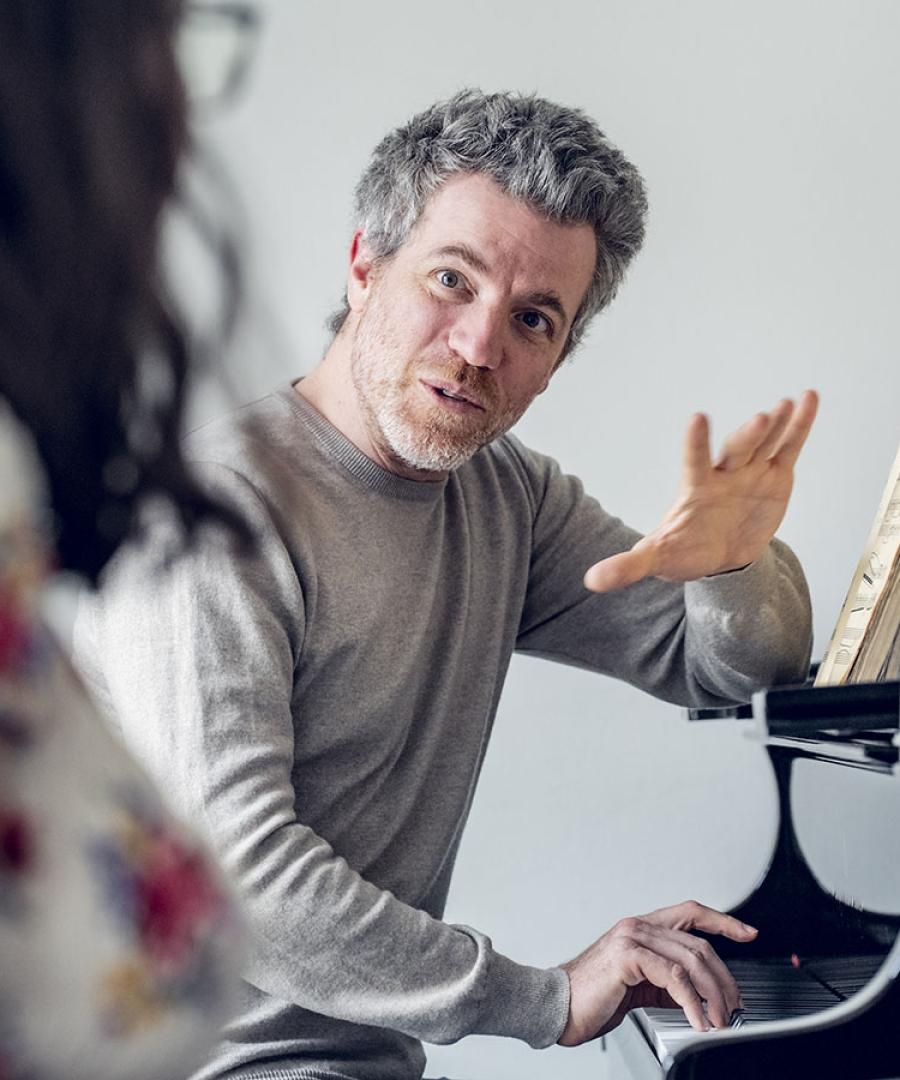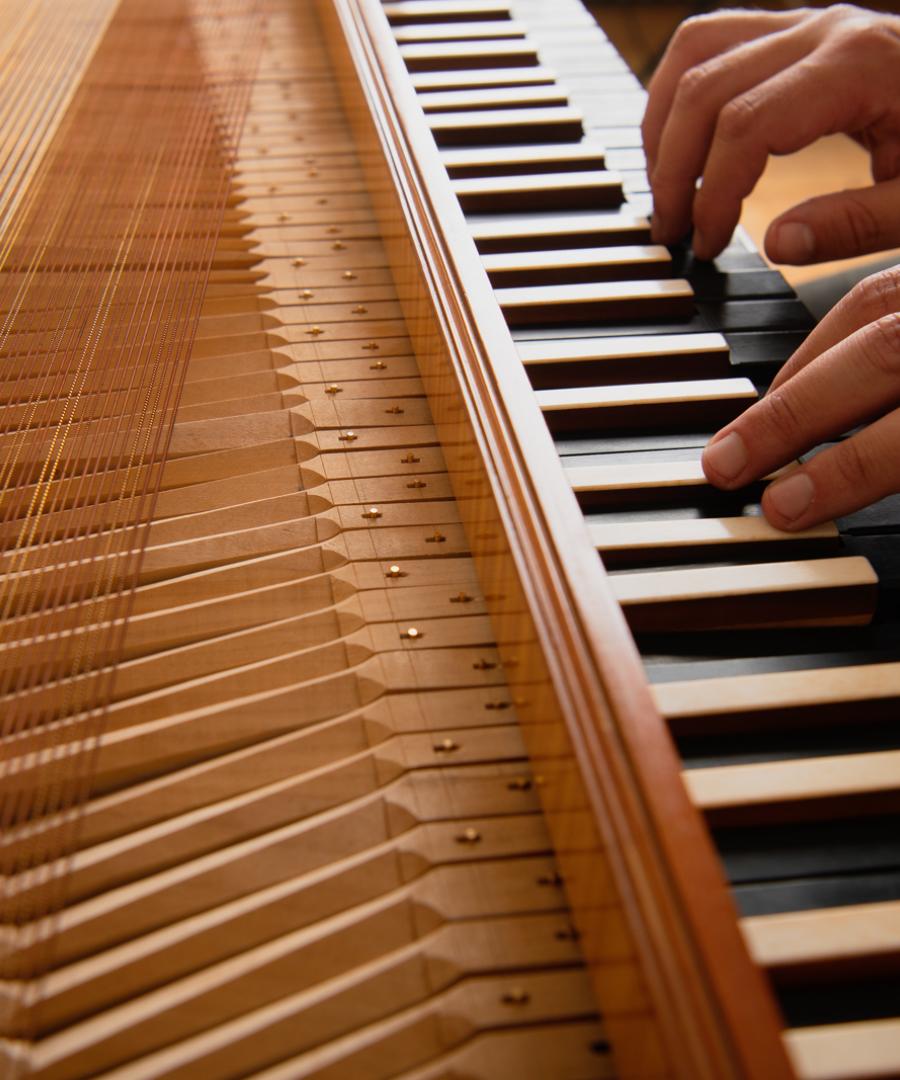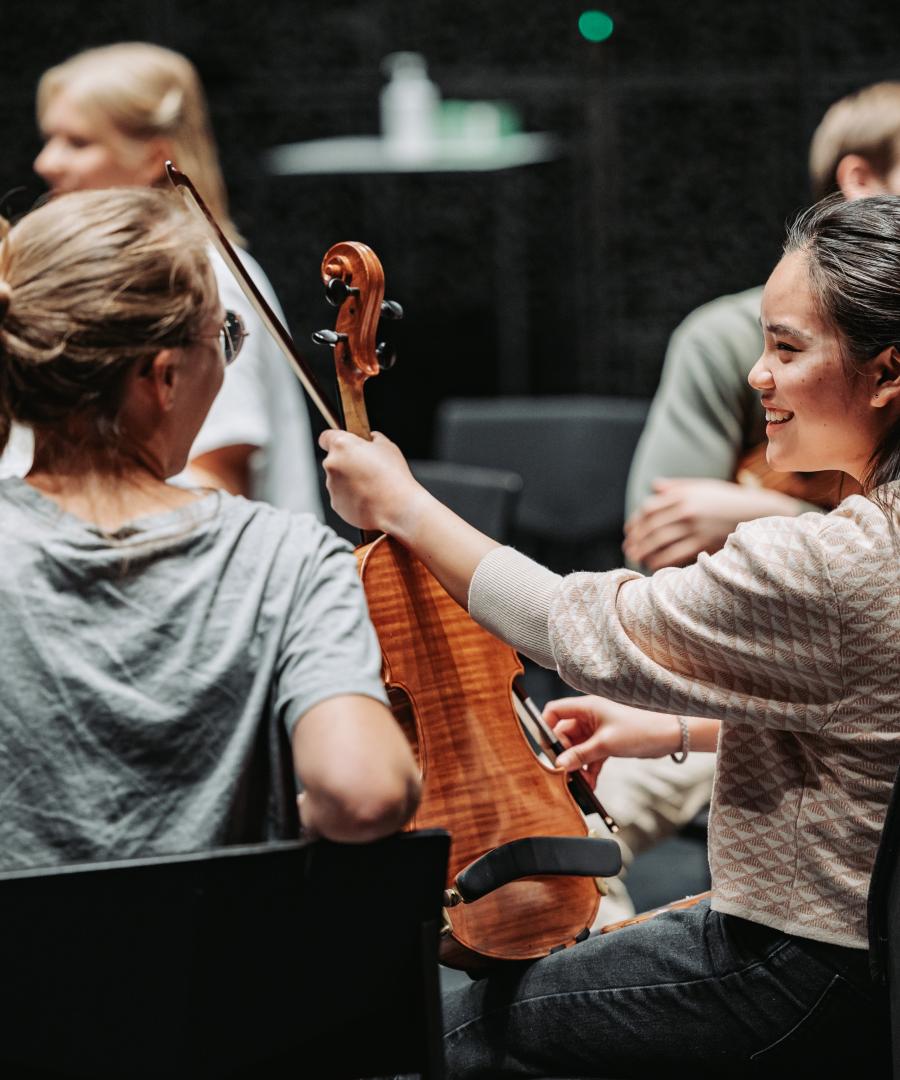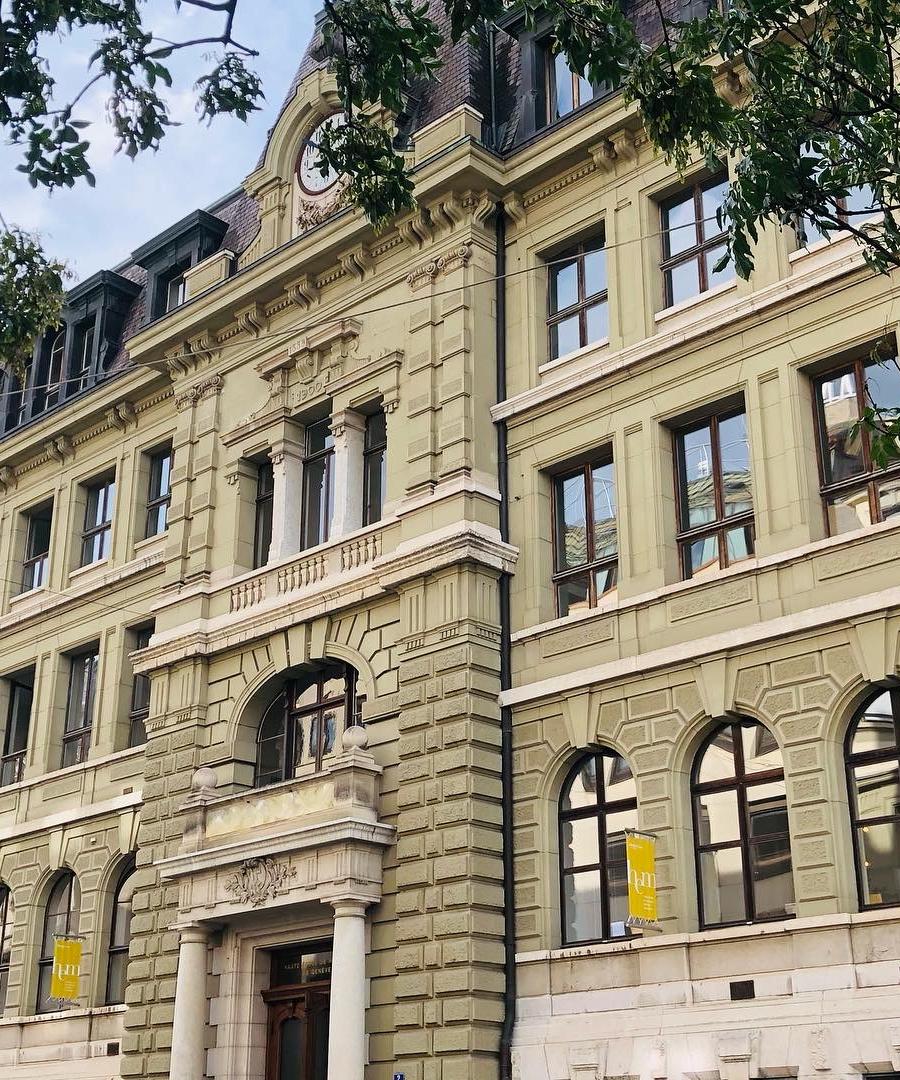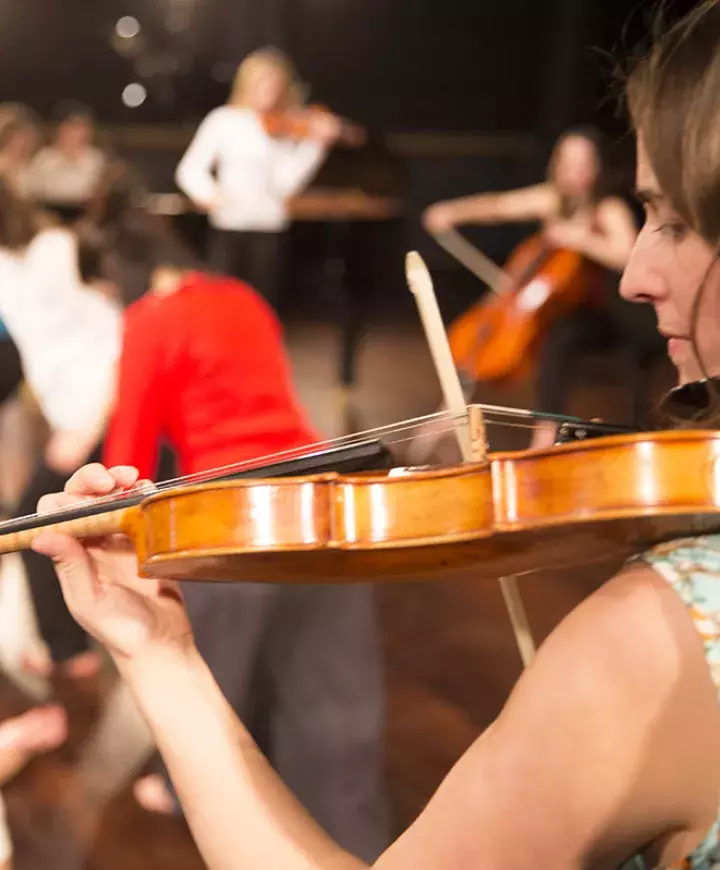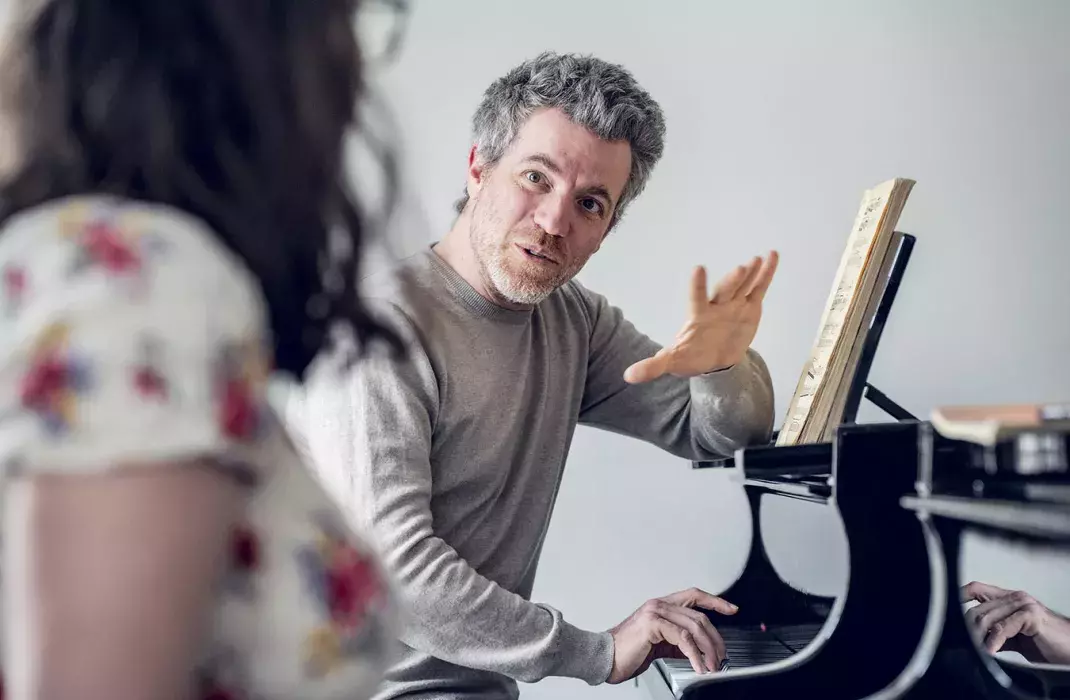- Studies
- Disciplines
- Research
- Events
- The school
Music in schools
The music in schools area of study explores the practical teaching tools necessary for teaching music at state schools.
The current teaching methods focus on active participation in music by the pupils, through singing and/or the use of instruments adapted for each age group, and also through the discovery and practice of a wide variety of musical styles, including current music in all its different forms. The Master’s in music in schools is therefore aimed at musicians with a generalist profile, often playing more than one instrument, and interested in all sorts of musical styles.
The music in schools area of study explores the practical teaching tools necessary for teaching music at state schools at secondary I level (orientation cycle) and secondary II (general culture school, high school of Geneva).
The holder of this qualification can also apply to teach in primary schools, but only to teach the middle cycle (5P to 8P), as the elementary cycle (1P to 4P) is reserved for those holding a BA in music and movement.
Pursuant to the CDIP’s directives, full access to the profession is only obtained after acquisition of additional teacher training of 120 ECTS credits dispensed by an Haute école pédagogique (HEP). In Geneva, the Institut universitaire de formation des enseignants (IUFE), attached to the University, is responsible for this training.
The music in schools area of study benefits from numerous opportunities to put knowledge into practice, in the form of observation internships, practical internships or indeed one-off teaching assignments.
Study plan
Abbreviations :
e = marked exam
p = validation by participation
rs = internship report
ce = co-assessment
cc = continuous assessment
SA = autumn semester
SP = spring semester
A1, A2, etc. = level of the course (first, second year, etc.)
S1, S2, etc. = level of the course (first, second semester, etc.)
Admission criteria
In addition to the general criteria for access to the Master’s, the following special conditions are requested:
- Potential for artistic development, making it possible to achieve, over the two years of the Master’s, a high level of professional competence.
- The ability to lead an artistic project in an increasingly autonomous way.
- Proven pedagogical aptitudes for teaching in state schools.
- An aptitude for undertaking research under the guidance of a mentor.
Admission to this study area takes place on the basis of a competition involving an assessment of artistic and pedagogical skills.
The music in schools area of study is also open to musicians who have not taken classical training, but who can prove they have taken an artistic path in the field of jazz and modern-day music.
Study programme
Main training
The main training module is focused first and foremost on the piano: modern improvisation, accompaniment of songs and jazz piano. Elements of leading a choir, plus one-off seminars on leading children’s choirs and choirs for young people, with work experience and internships at schools in the canton, are also part of this module. This artistic multitasking corresponds to the needs of the profession.
Special training
This module calls for mastery of specific knowledge that is vital for future teachers of music in schools: editing and production software (‘editing and sequencers’ class), complementary instruments (rhythm guitar and drums), ensemble playing of modern-day music and arrangement (‘transcreations’ class) and ‘world music’ workshops.
Complementary and optional training
The teaching units offered in this module form the subject of choices made by the student, under the supervision of the course director. Classes that can fuel their theoretical thought and/or practices, with a view to creating their Master’s coursework, will be prioritized.
Master’s Project
The artistic training ends with a Master’s work centred on cultural and musical leadership in a school setting. This project is drawn up by the student, under the supervision of the course coordinator.
